Jun 2, 2017 | Britain, coins, counterfeit, foreign

On the left is an altered British £1 coin. The coin on the right is a legitimate coin.
According to media reports confirmed by the Royal Mint, the three significant errors found are when the thistle on the reverse did not strike properly is produced as a smooth blob, the copper-nickel center of the bimetallic planchet appears to have melted across the coin, and the inner disc and outer ring did not fuse properly. Coins with legitimate errors have been sold on eBay (U.K. and U.S.) for significant premiums.
Unfortunately, scammers have picked up on these problems and have been selling altered coins on eBay as errors. Common alterations are based on removing the silver-colored center and create error-like coins by making different alterations. Amongst the tries to create something that looks like an error includes the Queen’s portrait appearing on the wrong side of the coin and facing the wrong direction which is impossible because of the how these coins are struck, the center of the obverse lacking the Queen’s portrait, and gouges removed from the center.
Both the errors and fakes are being sold for an average of £300 (approx. $386.13) on eBay.
If you want to purchase a British £1 error coin carefully examine the image and the image of a legitimate coin from the Royal Mint’s website. Make sure the person you are buying from has a return policy or buy from a dealer. Of course, it is easier to be careful buying from the U.K. on that side of the Atlantic, but for those U.S.-based error enthusiasts, you have to do your due diligence. Otherwise, you may get stuck with a fake!
Known legitimate errors
-
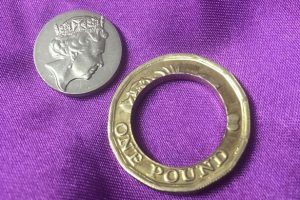
-
A weak strike can prevent the two metals from fusing properly allowing them to separate
-

-
Too hard of a strike is likely to have caused the copper-nickel center to melt across the coin.
-

-
First new £1 coin error found with missing detail on the thistle
May 7, 2017 | coins, education, foreign, video
As I am working on a manuscript about counterfeiting coins and currency, I started to search the internet for the location of some information when I stumbled on The British Museum’s website. Rather than find something about counterfeiting, searching the term “defacing coins” lead me to the most recent Curator’s Corner blog entry by Thomas Hockenhull, the curator of Modern Money for The British Museum.
For this entry, Hockenhull found a 1903 large penny with the words “VOTES FOR WOMEN” engraved over the head of King Edward III. It was done as part of the suffragist protests in England prior to World War I. Although not much of a presenter, The British Museum recorded a video featuring Hockenhull describing the coin and his research into how it might have come into existence. Rather than rehash what he said, you can watch the video here:
I have not to been to London for many years, but I remember spending a day at The British Museum was a highlight of the trip. It is one of the great museums of the world and worth setting at least one day touring the museum. There is so much to see that if you love to see the living embodiment of history, consider spending more than a day.
Apr 30, 2017 | coins, foreign, fun

A glance into my booth at DC Big Flea
One thing I like about this business is the variety of items that you can find. Aside from the various antiques and collectibles, there are a lot of interesting numismatic items that you may not find at a coin dealer’s table at almost any show. Most of these are not high priced items but are very interesting. For example, while Love Tokens can bring a nice premium, only a few specialized dealers would carry them. Since most of the dealers are also pickers. They will buy all of this stuff and bring it to a show like this.
A couple of smamples that I missed taking pictures of includes someone who had a coffee cup full of buffalo nickels for 25-cents a coin. After searching through most of the coins, all of them had at least a partial date. Not a dateless coin to be found. Another dealer was selling circulated Morgan dollars in VG-to-XF condition for $20 a coin, which is pretty good since the catalog value of most of these coins are $25-45 each. Current melt value of Morgan dollars is a little more than $14.
Although I do not have coins in my inventory at this show, you could have come by and bought a Red Book from one of the contributors, cheap!
Here are the pictures uploaded directly from my iPhone:
-
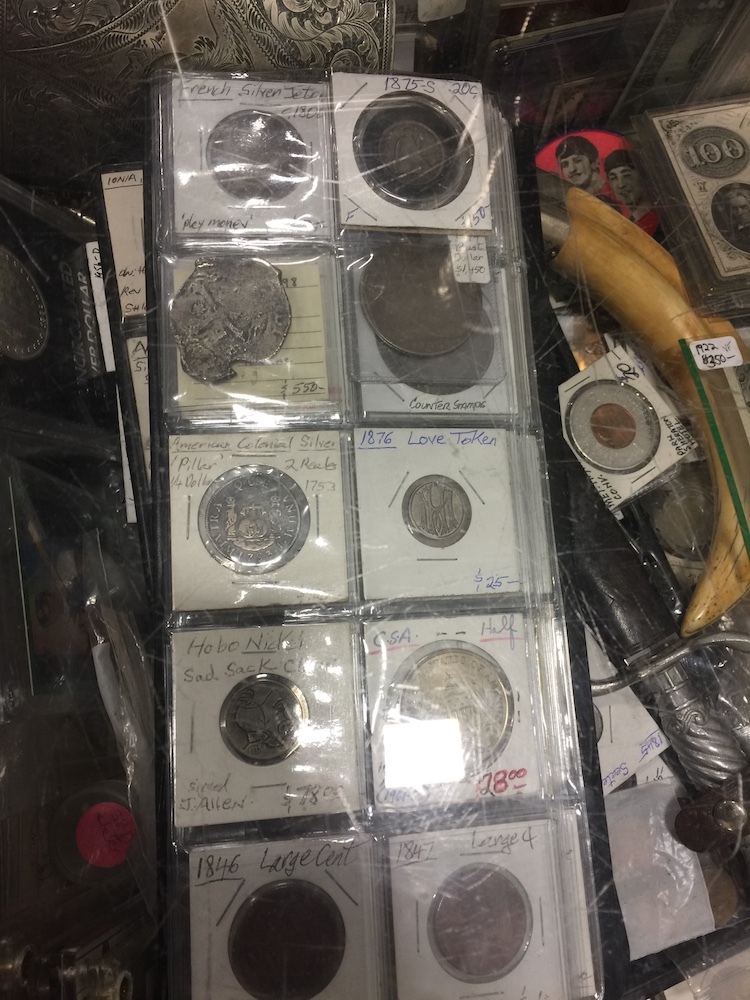
-
Page of odds and ends including a hammered coin, love token, and Hobo Nickel
-

-
A $100 Confederate States of America note
-
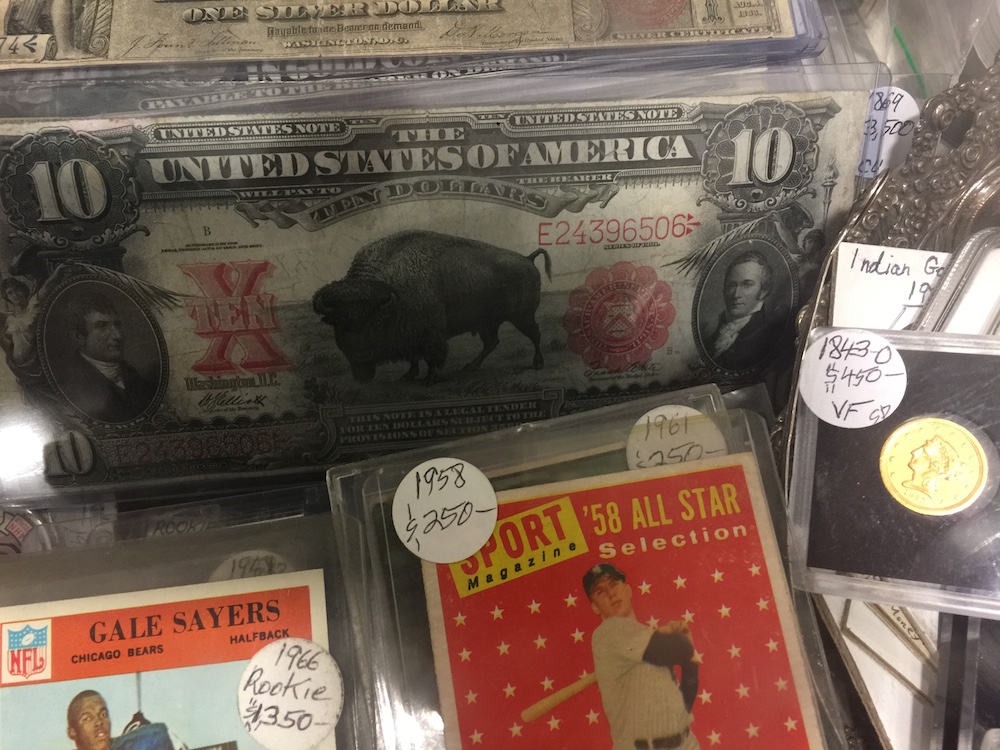
-
1901 $10 Dollar Lewis and Clark Bison note (Fr# 122), Elliot-White
-

-
A small selection of Love Tokens
-
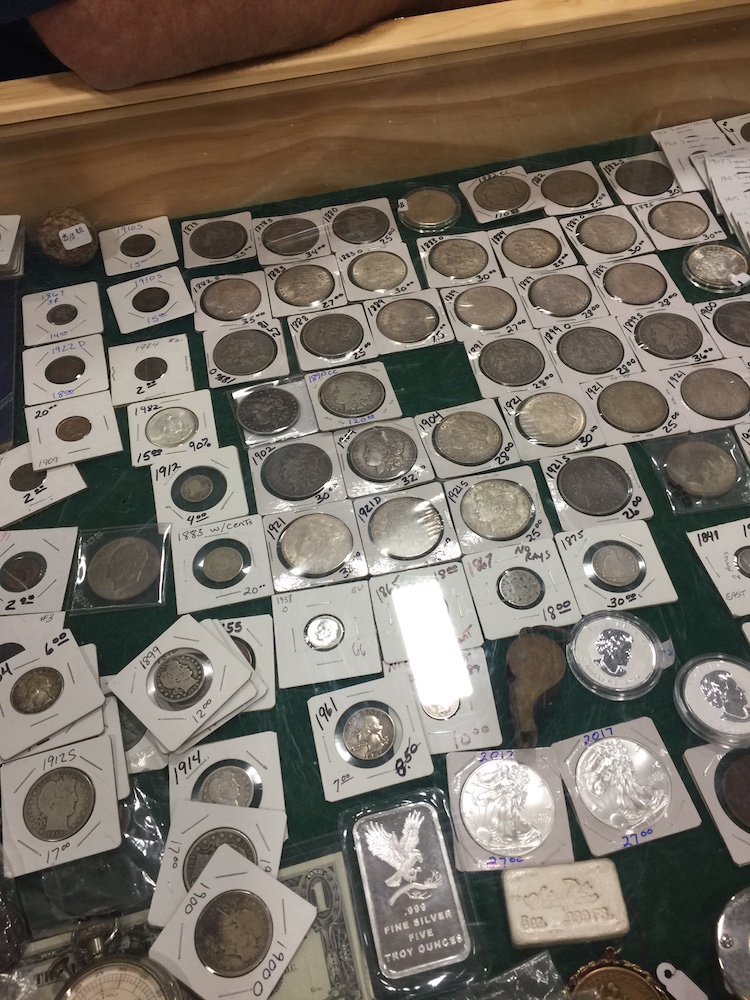
-
Lots of silver dollars and many at very good prices
-
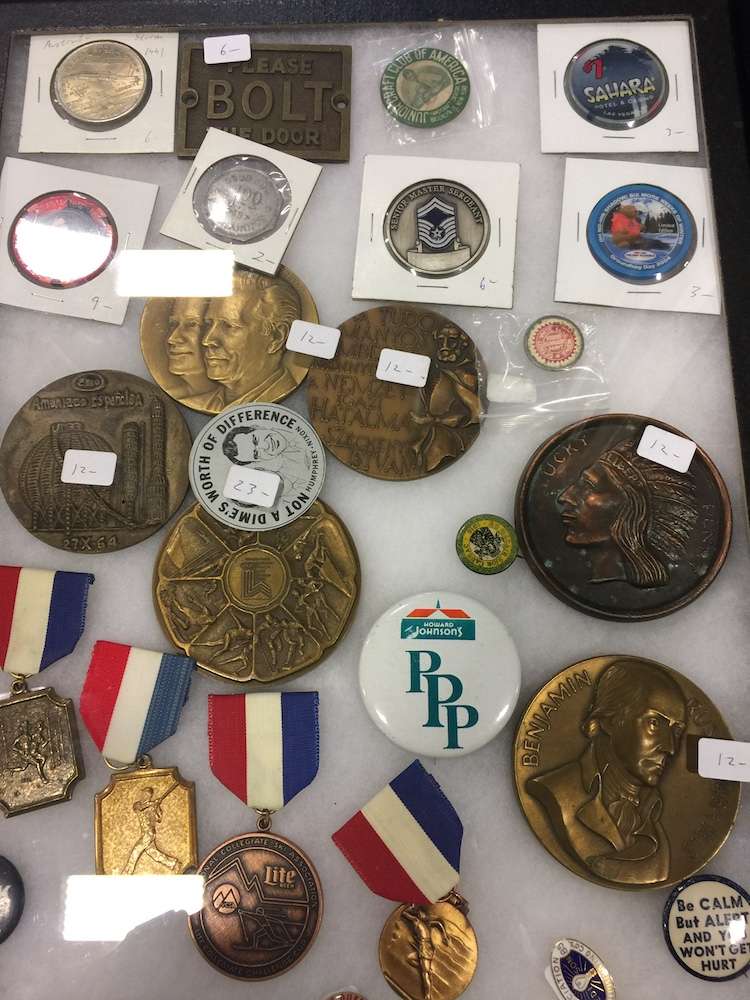
-
Medals, awards, casino chips, and a Challenge Coin
-

-
Casino chips and challenge coins make for an interesting display option!
-

-
Some decent Buffalo Nickels, although some of these prices are a little high for their condition
-
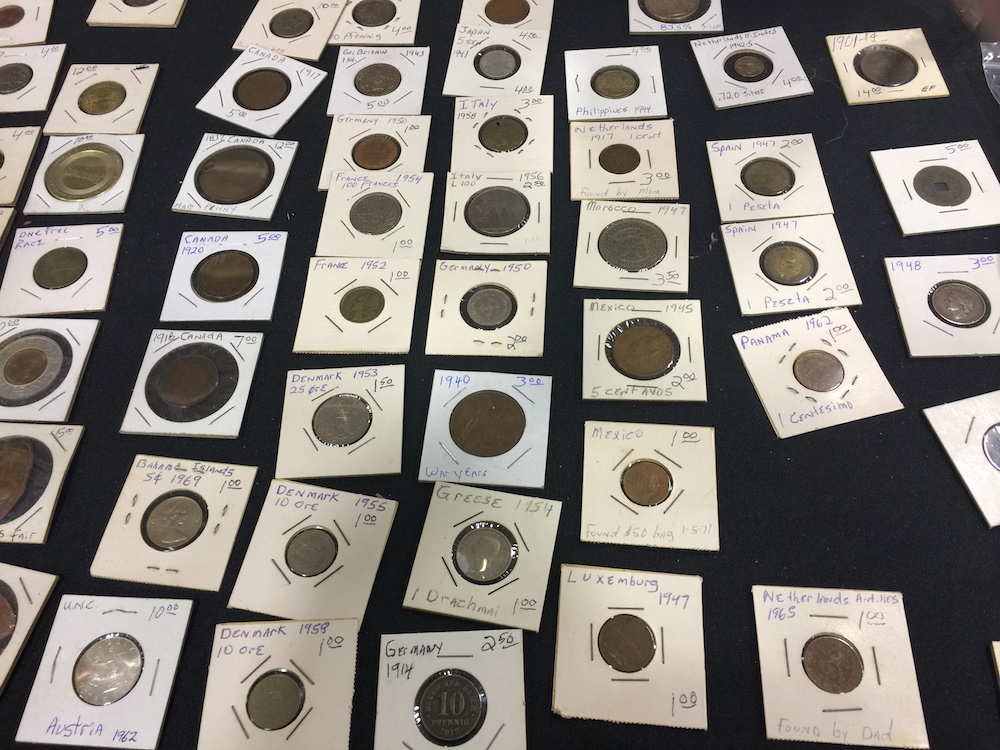
-
A layout of foreign coins. I bought the 1920 Canada Large Cent to the left
-
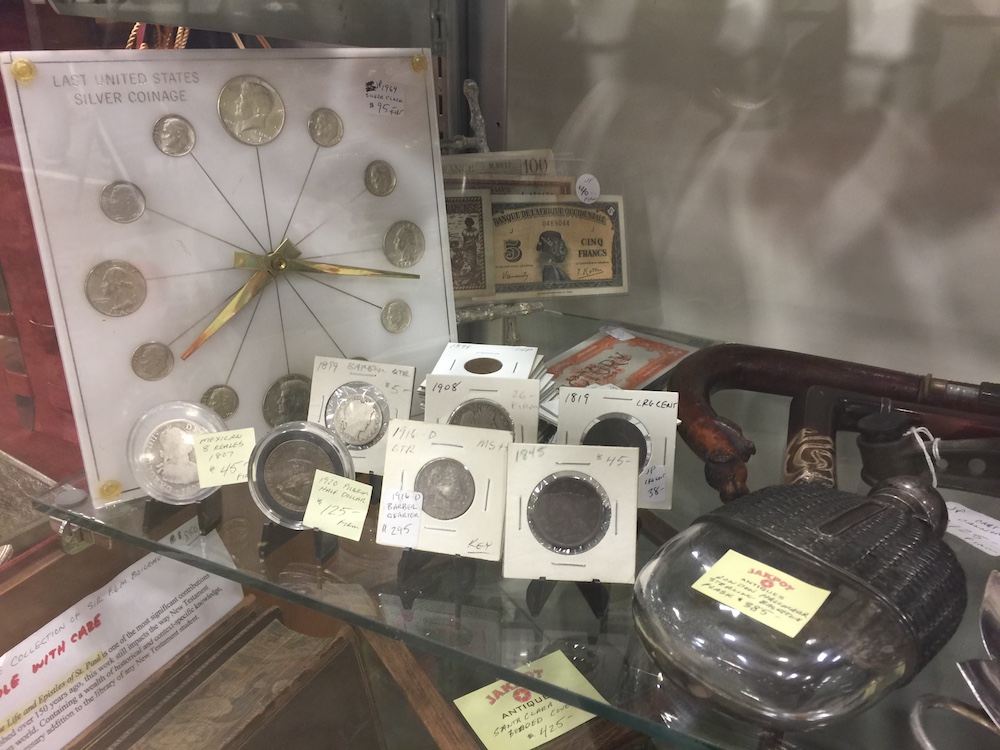
-
The clock on the left is an old Capital Plastics holder. It is the first time I have seen one.
-
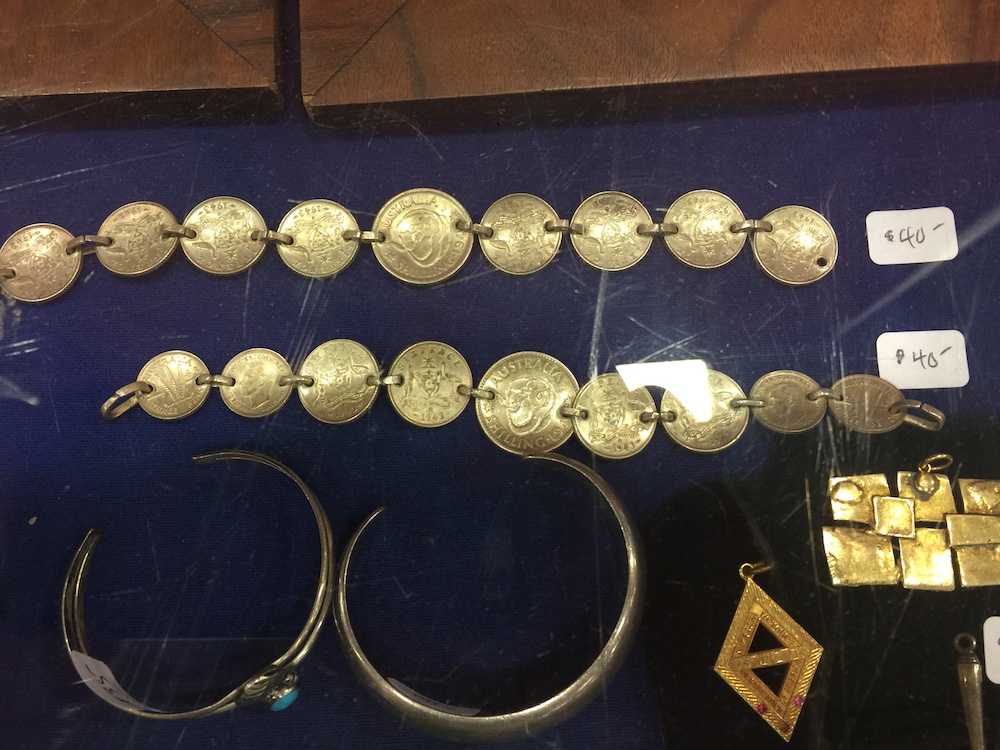
-
Bracelets are made from Australian pre-decimalisation coins that have been gold plated
-
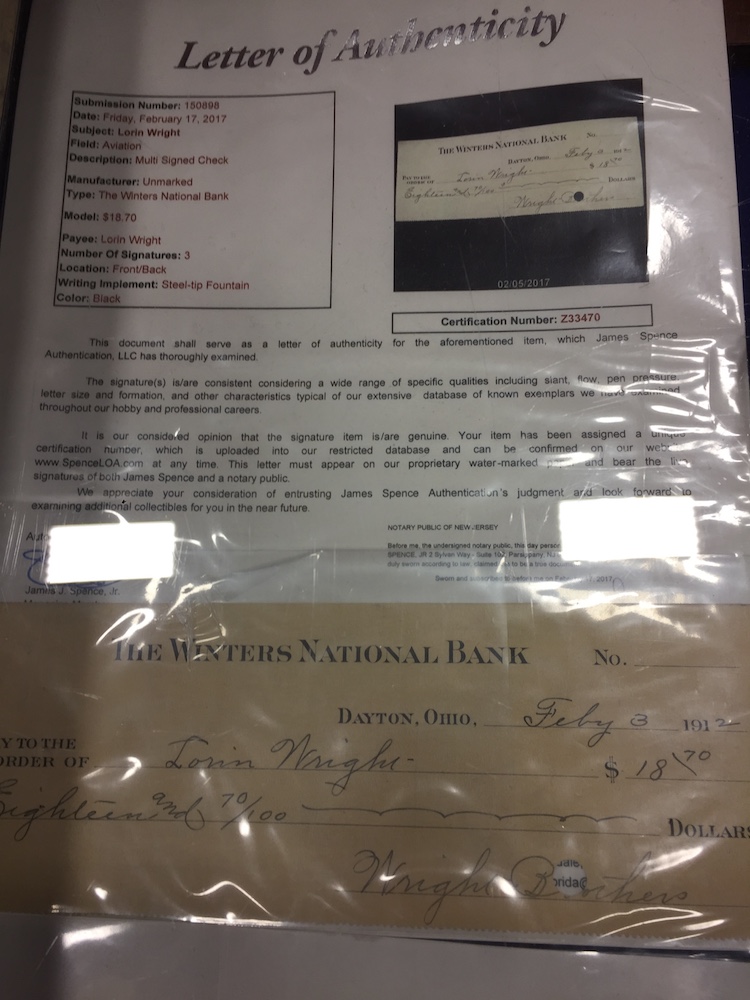
-
Check written to Lorin Wright from her brothers. Lorin Wright endorsed the check on the reverse.
-
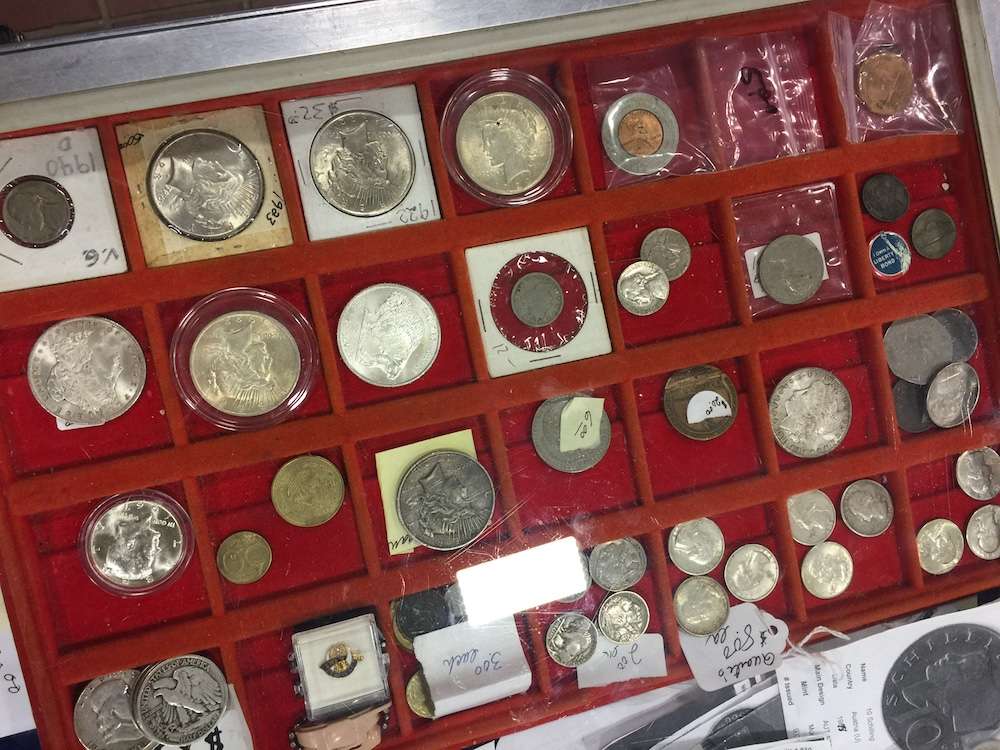
-
Tray of miscellaneous coins.
Apr 17, 2017 | coins, education, foreign, US Mint
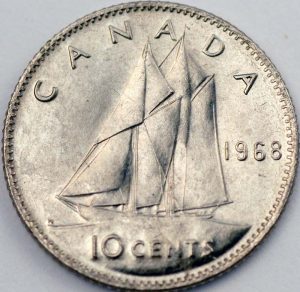
1968 Canada 10-cents coin struck by the U.S. Mint
After adding the coins struck for Iceland as part of the 2000 Leif Ericsson commemorative program and the coins struck at the Manila Mint, it appears that the Mints of the United States have produced over 10.75 billion coins and sold nearly 650 million planchets to foreign countries. That is over 11.4 billion pieces produced by the U.S. Mint from 1875 through 2000 that were not intended to circulate in the United States.
The following table shows the number of coins produced for each country:
| Country |
Number of pieces produced |
Country |
Number of pieces produced |
| Argentina (Blanks)1 |
64,058,334 |
Hawaii2 |
1,950,000 |
| Australia |
168,000,000 |
Honduras |
115,929,500 |
| Belgian Congo |
25,000,000 |
Iceland |
143,324 |
| Belgium |
25,000,000 |
Indo-China |
135,270,000 |
| Bolivia |
30,000,000 |
Israel |
91,000
|
| Brazil (Blanks)1 |
406,249,266 |
Korea |
295,000,000 |
| Canada |
85,170,000 |
Liberia |
56,744,679 |
| China |
39,720,096 |
Mexico |
91,076,840 |
| China, Republic Of (Taiwan) |
428,172,000 |
Mexico (Blanks)1 |
175,714,411 |
| Colombia |
133,461,872 |
Nepal |
195,608 |
| Costa Rica |
131,798,820 |
Netherlands |
562,500,000 |
| Cuba |
496,559,888 |
Netherlands East Indies |
1,716,368,000 |
| Curacao |
12,000,000 |
Nicaragua |
26,080,000 |
| Dominican Republic |
76,954,297 |
Panama (Republic) |
193,838,428 |
| Ecuador |
214,451,060 |
Peru |
761,067,479 |
| El Salvador |
226,695,351 |
Philippines3 |
3,690,543,252 |
| Ethiopia |
375,433,730 |
Poland |
6,000,000 |
| Fiji |
4,800,000 |
Saudi Arabia |
124,712,574 |
| France |
50,000,000 |
Siam (Thailand) |
20,000,000 |
| Greenland |
100,000 |
Surianam (Netherlands Guiana) |
21,195,000 |
| Guatemala |
7,835,000 |
Syria |
7,350,000 |
| Haiti |
90,324,000 |
Venezuela |
306,762,944 |
|
|
Blanks (planchets)
Coins
TOTAL |
646,022,011
10,754,294,742
11,400,316,753 |
Notes
1 Listings marked “(Blanks)” were those countries who purchased blanks and not struck coins.
2 Coins produced prior to Hawaii becoming a state.
3 Includes coins struck at Manila Mint.
I expected to see the number of coins struck for the Philippines to be very high. What surprised me were the volume of coins struck for the Dutch East Indies. Combine that number with the total for the Netherlands, the U.S. Mint has struck over 2 billion coins for them.
Some of the countries on the list are interesting like striking coins for Cuba until 1960, two years into Fidel Castro’s reign. France was also a surprise until I looked at the data and noticed that the coins were struck in 1944, post World War II. In 1968 and 1969, the Philadelphia Mint struck over 85 million 10 cent coins for Canada. This must have been a capacity issue by the Royal Canadian Mint which I will investigate at another time.
NOTE: For the non-technical among the readers, data normalization the process of organizing the data and making it consistent for use in a database. It makes programming easier when all of the data is consistent. Unfortunately, the data on foreign coin production from the U.S. Mint is formatted so that it can easily be printed. I am trying to fix that.
Credits
- Image of the U.S. Mint struck Canadian 10-cent coins courtesy of Canadian Numismatist Daniel W. Gosling. See this page for more information on the 1968-69 Canadian 10-cent coins.
Apr 16, 2017 | coins, education, foreign, US Mint

When looking for reference materials, there is nothing better than finding the authoritative source
Finding most of the information was easy. After searching a number of online archives and digitized publications, especially the Newman Numismatic Portal hosted at Washington University in St. Louis, most of what I was looking for was printed in the publication Domestic and Foreign Coins Manufactured by the Mints of the United States.
Although I have a printed copy, it would be easier if someone else digitized the book. After poking around a few archives, I found a digital copy and downloaded the entire image as a PDF. Although other formats were available, the PDF image was the most complete and the only one that my optical character recognition (OCR) program was successful in converting the printed page to something a computer can understand.
These printed tables have been updated ever since the Bureau of the Mint began to publish this compilation, which appears to begin around 1905. Prior, bits and pieces have been added to the Director’s report which was submitted to congress as part of a larger report by the Department of the Treasury. The problem is that the tables were created in a matter that would be easier to typeset using the technology of the time. It is not optimal for the person that wants to digitize the information.
I will spare the details, but it took more than two weeks of part-time work to extract the data and format it in a way that made sense for a computer. Even though I felt that it might have been faster to manually transcribe the data, the work will benefit future projects.
Not coincidentally, the last time the Mint published this book was in 1980, the last year they stopped striking accepting orders to strike coins for foreign countries.
The first coins struck by the Mint for a foreign government was the 1876 one centavo and 2½ centavo coins for Venezuela. In 1875, the Mint in Philadelphia struck 8 million of the one centavo and 1.5 million 2½ centavos coins for Venezuela. The composition is reported as being an alloy of copper, nickel, and zinc but there is no record of the ratio.
-

-
Venezuela 1876 Centavo (obverse)
-
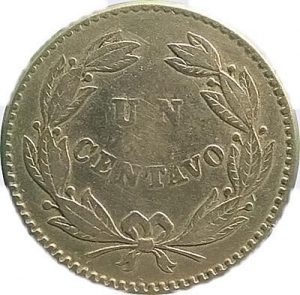
-
Venezuela 1876 Centavo (reverse)
-

-
Venezuela 1876 2½ Centavos (obverse)
-
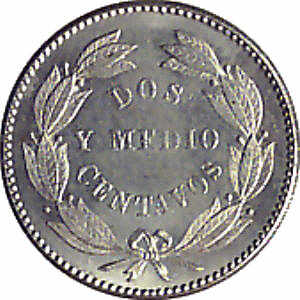
-
Venezuela 1876 2½ Centavos (reverse)
Apparently, it was common for the Mint to strike coins for foreign countries with the following year’s date. In one document, it explained that these coins were struck at the end of the year following the completion of the minting of United States coins. Since coin production and transportation was a bit slower than it is today, it allowed foreign governments to plan for their following year’s demand.
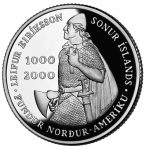
2000 Leif Ericson Icelandic Krónur Commemorative Silver Proof (Obverse)
One thing that none of these tables include are the coins struck at the Manila Mint. To help relieve the burden of making coins for the Philippines after they became a colony of the United States, the Mint was allowed to establish a branch mint in Manila. It is the only branch mint outside of the continental United States. The mint opened in 1920 and produced coins in one, five, ten, twenty, and fifty-centavo denominations. Coins struck by this mint bear either the “M” mintmark or no mintmark. The mint was closed in 1941 because of the outbreak of war.
Official records from the Manila Mint are difficult to find because they were not included in the regular Treasury reports. Using a combination of the colonial government reports to congress, which required a trip to the Library of Congress, and the Standard Catalog of World Coins, I was able to compile the data of coins produced in Manila.
Although the list is being edited for consistency in formatting (I like things accurate and pretty), the following is a summary of the coinage produced by the Manila Mint from 1920 through 1941:
| Denomination |
Composition |
Diameter (mm) |
Weight (g) |
Mintage |
| 1 Centavo |
Bronze |
5.30 |
25.00 |
142,310,195 |
| 5 Centavos |
Copper-Nickel |
4.75 |
19.00 |
32,242,041 |
| 10 Centavos |
.750 Silver, .250 Copper |
2.00 |
16.70 |
16,413,038 |
| 20 Centavos |
.750 Silver, .250 Copper |
4.00 |
21.00 |
13,123,046 |
| 50 Centavos |
.750 Silver, .250 Copper |
10.00 |
27.50 |
2,736,763 |
| Total Mintage |
206,825,083 |
When the table is completed and I figure out a way to display the data in a useful form, I will upload it for everyone to reference. I know that there will be some that would disagree with adding the mintage from the Manila Mint to those located in the United States. But the Manila Mint was owned by the United States government at a time that the Philippines was a colony of the United States and was run by administrators that were part of the Mint’s reporting structure. As the editor of the data, that is enough reason for me to include it with the rest of the data of foreign coins produced by the U.S. Mint.
Credits
- Venezuelan coin images courtesy of Monedas de Venezuela.
- 2000 Leif Ericsson Krónur Proof coin image courtesy of the U.S. Mint.
Mar 24, 2017 | Britain, currency, foreign, news
 There are times that while we are having fun collecting coins, currency, exonumia, and the like, there is a real world out there with real issues. For some, this hobby can be an escape from that reality.
There are times that while we are having fun collecting coins, currency, exonumia, and the like, there is a real world out there with real issues. For some, this hobby can be an escape from that reality.
On Wednesday, the Bank of England announced that they were looking into the issue where their new polymer notes contain traces of tallow. According to the supplier of the pellets that are used to make the polymer substrate, tallow is used in the resin it sources from a supplier to make those polymer pellets. It was a low-key response to an issue that was made bigger by the British vegan community.
While writing a snarky response, my Twitter feed blew up with the news of the attack on the Westminster Bridge and near Parliament Square in London. I stopped writing and turned on the news. Having once walked on that bridge there was a sinking feeling I could not shake.
We know that five people have died, including a police officer and the attacker. One was a man from Utah on the last leg of a 25th Anniversary trip with his wife. She was amongst the reported 50 people injured and one of the 31 requiring hospital treatment. One woman was so scared she jumped off the bridge and into the Thames River
MI5, the United Kingdom’s internal security force, arrested seven men and four women on terrorism charges. One of the women posted bail, the other 10 are still in custody. They have collected over 2,700 pieces of evidence that they will be studying.
Although I am not a “run-and-hide” type, I find it difficult to be snarky given the recent events, even if the story deserves that type of treatment. I am sure that the heartbreak of tallow will return to the news and will give me a chance to have fun at their expense. But for now, let’s wish the best for the people who were injured and the families of those who are mourning.
Feb 16, 2017 | coins, foreign, fun, silver
A few weekends ago, I was out picking when someone offered to sell a box of lapel pins and buttons. Most of the buttons were modern political mainly from the 1988 election through the 2008 election. There was a mix of both major parties along with a number of local and state races, primarily from Virginia.
The box was nothing remarkable. It was originally for high-priced basketball shoes from a well-known company in the western United States. Alongside many of the political buttons were lapel pins and some sports pins. I also noticed some buttons with cute sayings. While being stuck in the fingers I was thinking that I could buy the box and use it as junk filler at a show. Just like coin dealers have junk boxes, those of us in other collectible areas have our versions of junk boxes. In this case, I can lay them out in felt-lined trays and let buyers pick over them for a dollar each.
Flag and ribbon pins always sell. So do buttons that say, “I usually don’t wake up grumpy, I sometimes let him sleep.” This gets the ladies to laugh and look at some of my other items.
After setting up the card table I use to work on this type of sorting, I dumped the box in the middle of the table. Expecting to have to sort through a few hundred pins and buttons when I noticed a 2×2 flip on top of the pile. It was a coin sitting that was sitting in the bottom of the box now at the top of the list of things to look at.
At first glance, I noticed it was not a U.S. coin and thought that it just could be an uncirculated copper-nickel coin until I looked closer. Shifting my glasses to get a better view there was no mistaking the reverse design as a Mexican Liberatad. The 1984 Libertad is clearly marked “1 ONZA PLATA PURA” (1-ounce pure silver) with the obverse declaring it from “ESTADOS UNIDOS MEXICANOS” (United States of Mexico).
I found a beautiful, uncirculated 1984 Mexico Libertad worth more than what I paid for the box!
-
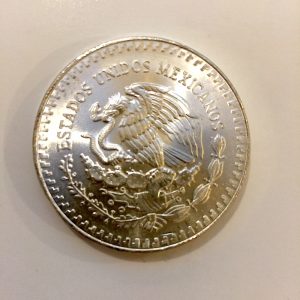
-
Obverse of a 1984 Mexico Libertad
-

-
Reverse of a 1984 Mexico Libertad
-
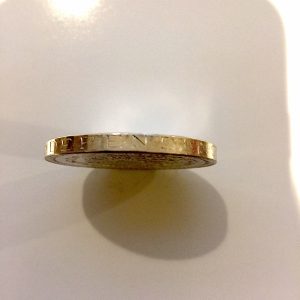
-
Edge lettering on a 1984 Mexico Liberdad
Although I love large silver coins, I have never owned a Libertad. Did you know that the edge of the Libertad has edge lettering? It reads “INDEPENDENCIA Y LIBERTAD” (Independence and Freedom). The distinctive mintmark of the Mexico Mint is on the reverse and has an overall great look.
I almost did not buy the box!
Jan 25, 2017 | coins, foreign, fun, video
 Let’s have some fun rather than talk about the mundane! Covering floors, cars, or any other surface using coins is not something new, but according to Matt Giles this has not been done in the United Kingdom. On the YouTube page where the video is posted, he writes:
Let’s have some fun rather than talk about the mundane! Covering floors, cars, or any other surface using coins is not something new, but according to Matt Giles this has not been done in the United Kingdom. On the YouTube page where the video is posted, he writes:
When thinking about what to lay in the kitchen Amy came up with a fantastic idea inspired by what she had researched online. We saw a bunch of penny floor projects in the USA, it seemed a really popular way of creating a bespoke retro floor for any part of the house, but wasnt done in the UK. Challenge accepted!
We took 27,000 1p coins and decided to give our kitchen diner a new look. Each coin was individually glued to the floor which had been self levelled before hand and left to dry. After gluing down all the coins a black grout was applied to fill the gaps followed by a high gloss epoxy resin to cover and seal.
The end result is simply awesome. The floor looks stunning and the weeks of hard work has been worth the pain.
Seems like an inexpensive idea. Take £270 in pennys (yes, that is how the Brits spell the plural of penny), glue, grout, apply a high gloss epoxy resin, and take about two weeks of work to come up with something different. For anyone curious, £270 is currently equivalent to $337.88.
Maybe his video will inspire your creativity!
Dec 12, 2016 | Canada, coins, commemorative, foreign
Space: the final frontier.
These are the voyages of the starship Enterprise.
Its five-year mission: to explore strange new worlds,
to seek out new life and new civilizations,
to boldly go where no man has gone before.
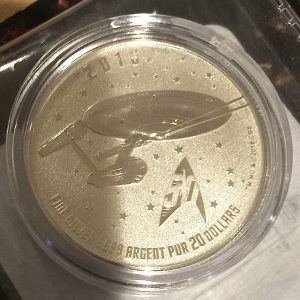 I admit to being fascinated by space and space travel. This has to go back to my watching the Mercury and Apollo missions as a youngster. Even then, I would watch most television shows that were based on space or something about space including the comedies Lost in Space and My Favorite Martian.
I admit to being fascinated by space and space travel. This has to go back to my watching the Mercury and Apollo missions as a youngster. Even then, I would watch most television shows that were based on space or something about space including the comedies Lost in Space and My Favorite Martian.
During its first run, I was able to watch Star Trek during its last season. When it was picked up in syndication and played on the independent television stations or late at night, I would watch and become a bigger fan. In college, it was common to walk into the TV Lounge to see the television tuned to Star Trek, especially late at night.
When Star Trek: The Motion Picture was released in 1979, I was able to see it during my December break from college. No, it wasn’t the best of the movies, but it was Star Trek. I was a fan of Star Trek: The Next Generation and I have seen all of the movies except the most recent—which I will catch when it is available on cable!
Aside from being great stories, Star Trek has inspired generations. Look at the technology that is in use today. Cell phones were inspired by the communicators; the ship’s computer with its infinite database processing is now in supercomputers of today, like IBM’s Watson; while Majel Barrett was the voice of the first computer, we now have Siri, Cortana and Alexa on portable devices; large flat screen displays are now our television; intelligent personal assistants went from the personal digital assistant (PDA) to being integrated with our computer that can now speak to us; then there is the universal translator; tablet computers; video conferencing; even something like Transparent Aluminum (Star Trek IV: The Voyage Home) exists in something called aluminum oxynitride (ALON). And remember, Scotty gave the formula for transparent aluminum using a quaint keyboard on a Macintosh!
Yes, I am a hard-core fan. But I have never been to a convention! I never really wanted to go. I did meet William Shatner when I was working for NBC, but that is another story for another time.
The Royal Canadian Mint has produced a set of coins for Star Trek fans. As part of the series, the Royal Canadian Mint produced three half-ounce silver coins with enameled images of Spock, Uhura, and Scotty; one ounce coins with images of iconic scenes: Captain Kirk in “Trouble with Tribbles,” the evil Spock and Dr. McCoy in “Mirror, Mirror,” and the time machines image that was in “The City on the Edge of Forever” which featured a guest appearance by Joan Collins. They are nice coins even though they are enameled. However, I think they are too expensive. It’s probably because of the licensing fees.
Of course, I had to get something. I decided to buy the $20 for $20 silver coin, Star Trek: Enterprise. It is a 7.96-gram silver coin with a face value of $20 with the reverse showing an image of the U.S.S. Enterprise and the Star Trek 50th Anniversary logo. The obverse has the portrait of Queen Elizabeth II, as required for all Canadian coins. While the RCM calls the finish “specimen,” it resembles a reverse proof. Not only is this $20 in Canadian funds, which is $15.22 in US funds as I type this, but there is also free shipping!
-
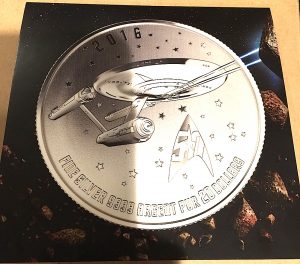
-
2016 Canada Star Trek $20 Silver Coin folder cover
-
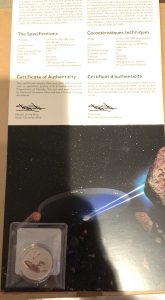
-
2016 Canada Star Trek $20 Silver Coin inside the folder
-

-
Closeup of the 2016 Canada Star Trek $20 Silver Coin
I also decided to buy was the stamp and coin set produced jointly with the RCM and Canada Post. The set includes a nickel-plated steel 25-cent coin with an engraved center surrounded by enamel ring with six different views of the U.S.S. Enterprise (NCC-1701). The stamp features Canadian-born actor William Shatner as Captain James T. Kirk with the U.S.S. Enterprise orbiting a red-colored planet in the background. Also included is a coil stamp produced as a collectible sheet featuring the U.S.S. Enterprise and a Klingon D7-class battle cruiser from the episode Day of the Dove.
-

-
Outside folder of the 2016 Canada Star Trek Coin and Stamp Set
-
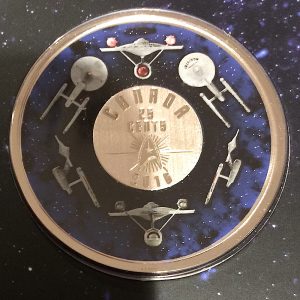
-
2016 Canada Star Trek 25-cents Coin
-

-
Inside the folder of the 2016 Canada Star Trek Coin and Stamp Set
-
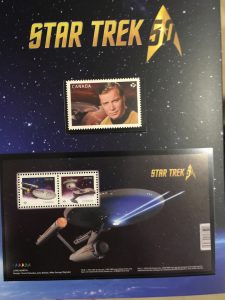
-
The stamps included with the 2016 Canada Star Trek Coin and Stamp Set
You can buy the set from the RCM for $34.95 in Canadian funds, which is $26.60 in US dollars. If you buy the stamp and coin set separately, you will pay postage. However, if you buy both coins together, the RCM picks up the postage.
Before I forget, the Royal Canadian Mint will only ship directly to addresses in Canada and the United States. Collectors in other countries will have to contact a dealer.
Jul 16, 2016 | copper, foreign, history, medals, tokens
A few weeks ago I wrote about the potential effects of Brexit on markets should the Brits vote to leave the European Union. When the OUT vote won by a slim margin, there was an instant worldwide reaction. In the subsequent weeks, we have seen world markets react to everything. After an initial fall in markets because of Brexit they have recovered only to be sent back into uncertainty with world events.
The London PM Gold Fix was $1,265.12 before the polls closed on June 23. The next day, the London PM Gold Fix closed at $1,315.50 (4-percent increase). On July 15, the PM Gold Fix closed at $1,327.00, 4.9-percent increase since the vote. Experts are saying gold could continue to climb at the 4-percent rate for the near future.
Silver has been on a slow and steady rise for most of the spring also saw a bump following the Brexit vote. When the London Silver Fix closed at $17.29 on June 23, this was already a $3.29 increase (23.5-percent) from the January 4 first close of 2016 price of $14.00. After the results were announced, London Silver Fix closed at $18.04, a 4.3-percent increase. With the London Silver Fix closing at $20.14 on July 15 (16.48-percent increase), some pundits are suggesting that silver will continue to outperform gold for the near future.
-
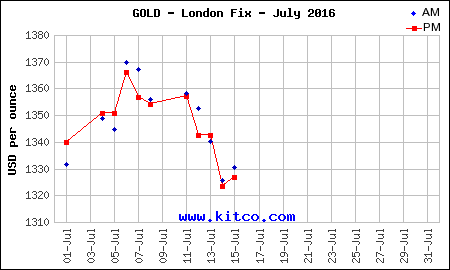
-
Kitco Gold Chart as of 8/15/16
-

-
Kitco Silver Chart as of 8/15/16
When I wrote about Brexit, I also mentioned the “In/Out UK EU Referendum Medallion” produced by Chard(1964), a British metals dealer. After the post, the folks at Chard saw a small bump in sales from collectors the United States from a few of my readers. I was not paid to mention the medal. I just found the information online and thought it was an interesting idea. Shortly before the vote, someone at Chard contacted me and offered to send me some medals.
After a swim across the pond, the medals arrived in my physical mail last weekend. Even though I thought Brexit was a bad idea, the medals are still very cool. Design is the same on both medals. One is copper and the other is Abyssinian Gold, a type of brass made of 90-percent copper and 10-percent zinc that has a gold-like color. Medals are 31mm in diameter and weighs 14 grams making it a nice sized coin for flipping.
-

-
Chard Brexit copper token—IN side
-
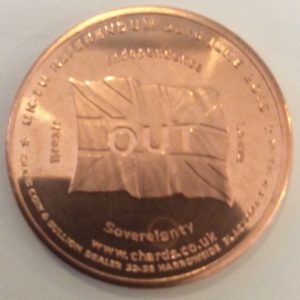
-
Chard Brexit copper token—OUT side
-
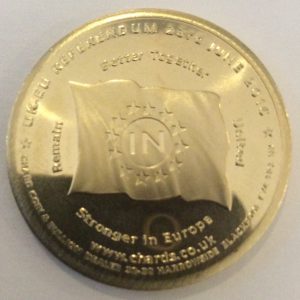
-
Chard Brexit Abyssinian Gold token—IN side
-
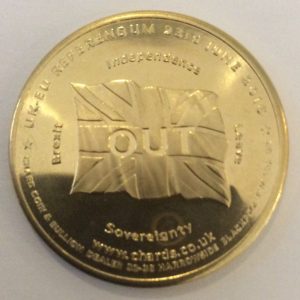
-
Chard Brexit Abyssinian Gold token—OUT side
Chard sent two sets of the medals. I will keep one set and donate the other to my coin club’s annual auction whose proceeds will benefit the Scouts and other numismatic-related education in our region.
It appears that these medals can still be purchased for £2.95 each ($4.33 at the current exchange rate) plus shipping (estimated at £6.00 or $8.80) directly from Chard’s website. I am not making money from this endorsement. I just think it’s a fun collectible!
Static charts courtesy of
Kitco.





























 Let’s have some fun rather than talk about the mundane! Covering floors, cars, or any other surface using coins is not something new, but according to Matt Giles this has not been done in the United Kingdom. On the
Let’s have some fun rather than talk about the mundane! Covering floors, cars, or any other surface using coins is not something new, but according to Matt Giles this has not been done in the United Kingdom. On the 













